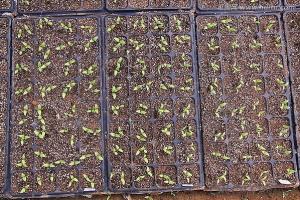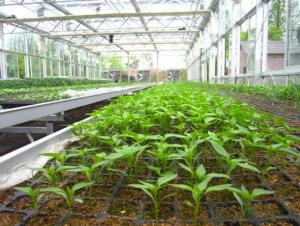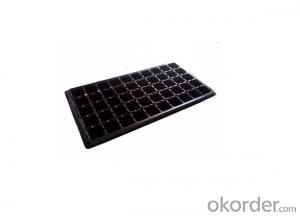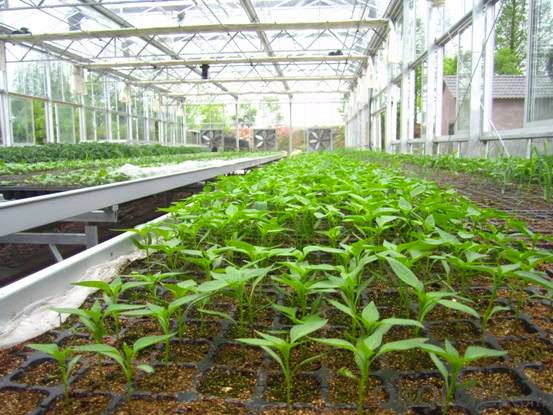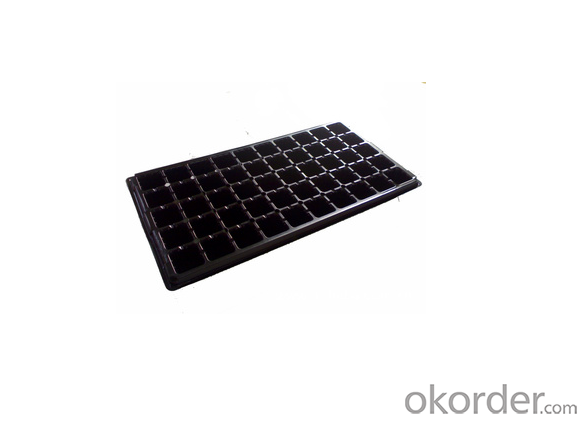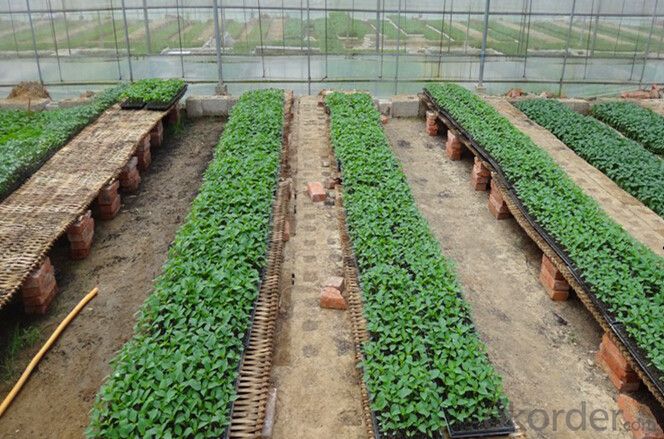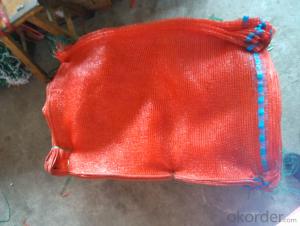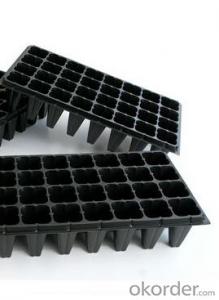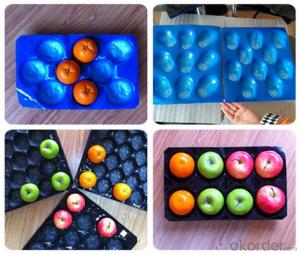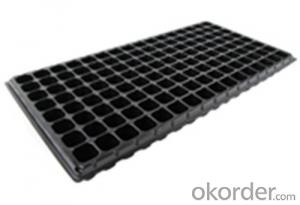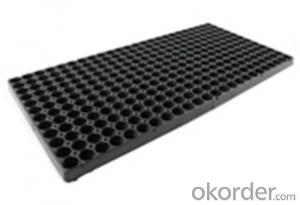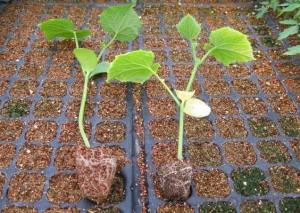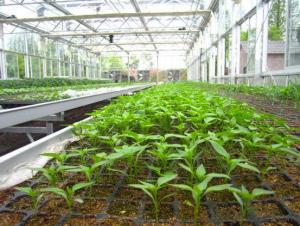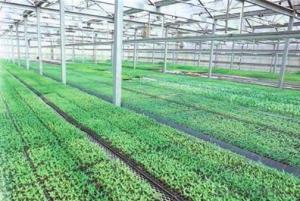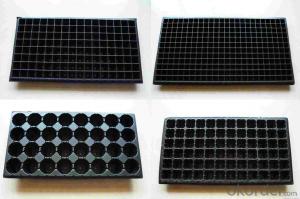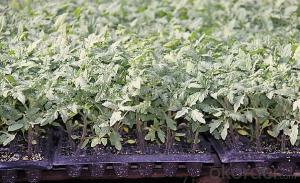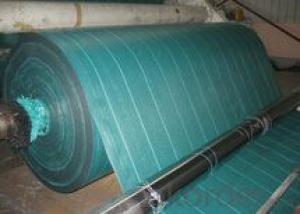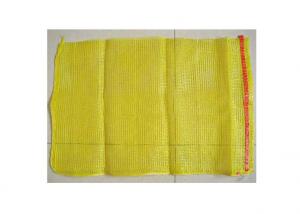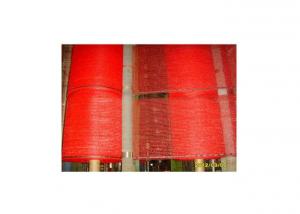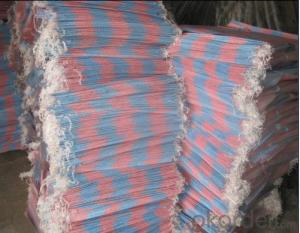Plug Trays (Growing and Seedling) Greenhouse Usage HIPS Made Plastic
- Loading Port:
- China main port
- Payment Terms:
- TT OR LC
- Min Order Qty:
- 3000 pc
- Supply Capability:
- 50000 pc/month
OKorder Service Pledge
OKorder Financial Service
You Might Also Like
Brief Introduction to CNBM:
CNBM International Corporation (CNBM International) is the most important trading platform of CNBM Group Corporation, a state-owned company under the direct supervision of State-owned Assets Supervision and Administration Commission of the State Council.
CNBM International is highly recognized by its business partners and clients all over the world and has obtained rapid development under the spirit of win-win. We will carry on the mutual beneficial, innovative and revolutionary trading structure as we did before, create value for our employees, share holders and clients and benefit the whole society in our future development.
Features of Plug Trays (Growing and Seedling) HIPS Made Plastic Plug Tray for Greenhouse:
· Material: HIPS
· Thickness: 0.5mm-1.5mm, Standard:1mm
· Weight: 80g(±5)g-230g(±5)g, Standard weight:155g(±5)g
· Size: length:490mm-540mm, width:190mm-345mm,depth:25mm-150mm
· Standard:540mmX280mm
· Cell count: 18-512
· Package: In Carton
· Warrenty: 8-10 times
Picture:

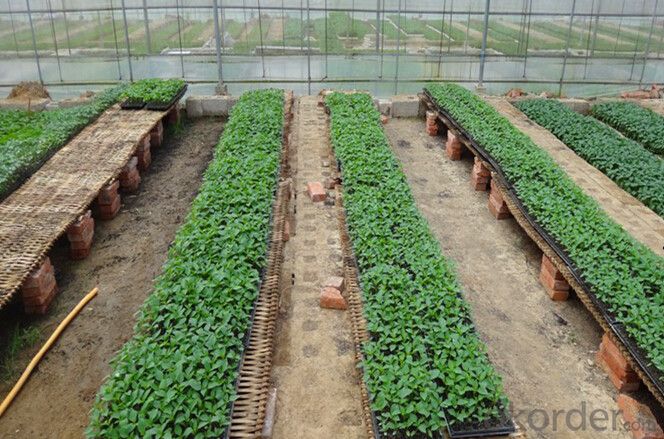
Specification of Plug Trays (Growing and Seedling) HIPS Made Plastic Plug Tray for Greenhouse:
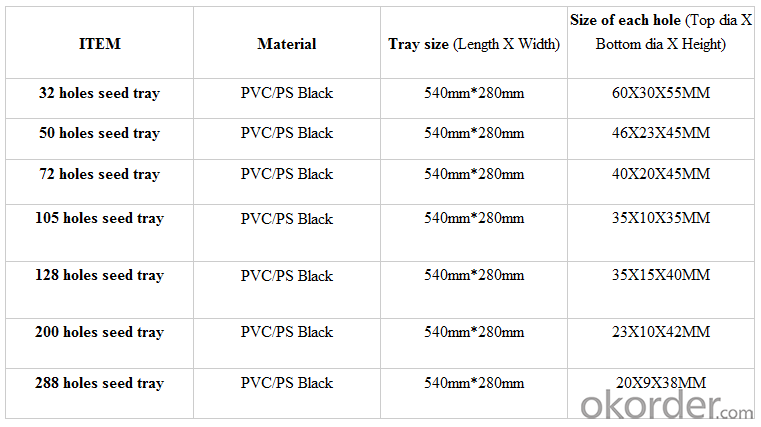
FAQ of Plug Trays (Growing and Seedling) HIPS Made Plastic Plug Tray for Greenhouse:
Q:1.How many times can the seed tray be used?
A: Under the same environment, it is decided by the thickness. Usually 0.6mm thickness can be used for 1 or 2 times.
1.0 thickness can be used for 3-4 times. 1.5 thickness can be used for 8-10 times.
Q: 2.How long is the production time?
A: Usually one to two weeks.
Q: 3.How is the seed tray being packaged?
A: They can be packaged in carton or pallets. Carton size is 1375px*725px*1250px.
- Q: Is it possible to utilize agricultural plastic products as a substitute for traditional energy sources?
- <p>Yes, agricultural plastic products can be used as alternative energy sources. They can be processed and converted into fuel through a process known as pyrolysis, which breaks down the plastic into its chemical components, producing a synthetic fuel that can be used as an energy source. This not only helps in managing plastic waste but also contributes to reducing reliance on fossil fuels. However, it's important to note that the efficiency and environmental impact of such processes are subjects of ongoing research and development.</p>
- Q: Are nursery trays suitable for starting herb cuttings?
- Yes, nursery trays are suitable for starting herb cuttings. They provide a controlled and protected environment for the cuttings to establish roots, and the individual compartments in the tray help to keep the cuttings separate and organized. Additionally, nursery trays often have drainage holes to prevent waterlogging, which is crucial for successful rooting.
- Q: What are the different types of agricultural plastic wraps?
- There are several types of agricultural plastic wraps, including silage wrap, stretch wrap, greenhouse film, mulch film, and bale wrap.
- Q: What are the benefits of using plastic tree shelters for young tree protection?
- Using plastic tree shelters for young tree protection offers several benefits. Firstly, these shelters provide physical protection against harsh weather conditions, such as strong winds, heavy rain, and extreme temperatures, allowing the tree to establish and grow in a controlled environment. Secondly, the shelters also act as a barrier against herbivores and pests, preventing them from damaging or feeding on the young trees. Additionally, the plastic material of these shelters creates a microclimate that promotes faster growth and reduces water stress by retaining moisture around the tree. Lastly, the transparent nature of the shelters allows sunlight to reach the tree, facilitating photosynthesis and ensuring healthy development. Overall, plastic tree shelters are an effective tool for enhancing the survival rate and growth of young trees.
- Q: How does plastic compost bin contribute to organic waste recycling?
- A plastic compost bin contributes to organic waste recycling by providing a contained and controlled environment for the decomposition of organic materials. It helps in breaking down the waste into nutrient-rich compost through the process of aerobic decomposition. The bin's design allows for proper airflow, moisture retention, and temperature regulation, which accelerates the decomposition process. This ultimately reduces the amount of organic waste that ends up in landfills and promotes the production of nutrient-rich compost that can be used as a natural fertilizer for plants and gardens.
- Q: What are some ground cover options for high altitude gardens?
- Some ground cover options for high altitude gardens include creeping thyme, sedum, alpine rock cress, and alpine strawberries. These plants are hardy and can withstand the harsh conditions typically found at high altitudes.
- Q: Can nursery trays be used for hydroponic systems?
- Yes, nursery trays can be used for hydroponic systems. These trays often have compartments that are suitable for holding plants and can be easily modified to accommodate hydroponic techniques such as nutrient film technique or deep water culture. However, it is important to ensure proper drainage and adequate air circulation in the trays to prevent waterlogging and root rot.
- Q: What types of plants are suitable for nursery trays?
- Various types of plants are suitable for nursery trays, including small herbaceous plants, bedding plants, seedlings, and young perennials. Additionally, plants with shallow root systems or those that can be easily transplanted are commonly grown in nursery trays.
- Q: i went in a shop in my city the other day and there was this advertisement in the shop window plastic bags 10p each or you can have a paper one for free, i watched and nearly all the people that came out of the shop had a plastic one ( that they paid 10p for ), why? when they could have had a paper one for free.i would have had a paper one for freewhat would you have had? and why
- There is a lot to be said for those wonderful little handles. I re-use my plastic shoppng bags until they are in shreds.Plus, paper comes from trees, and haven't we cut enough of those down to last a lifetime? I purchased fabric bags from my grocer and love them---I get handles to use and everything. That is another option that is available nation-wide.
- Q: This question seeks to understand the most recent developments and innovations in the design of agricultural plastic products.
- <p>The latest trends in agricultural plastic products design include the use of biodegradable plastics, smart irrigation systems, and precision farming technologies. Biodegradable plastics reduce environmental impact by breaking down naturally over time. Smart irrigation systems use sensors and data analytics to optimize water usage, while precision farming technologies enable targeted application of fertilizers and pesticides, reducing waste and increasing efficiency. Additionally, there's a focus on developing lightweight and durable materials for greenhouses and other structures, as well as incorporating IoT for real-time monitoring and control of agricultural environments.</p>
Send your message to us
Plug Trays (Growing and Seedling) Greenhouse Usage HIPS Made Plastic
- Loading Port:
- China main port
- Payment Terms:
- TT OR LC
- Min Order Qty:
- 3000 pc
- Supply Capability:
- 50000 pc/month
OKorder Service Pledge
OKorder Financial Service
Similar products
Hot products
Hot Searches
Related keywords
